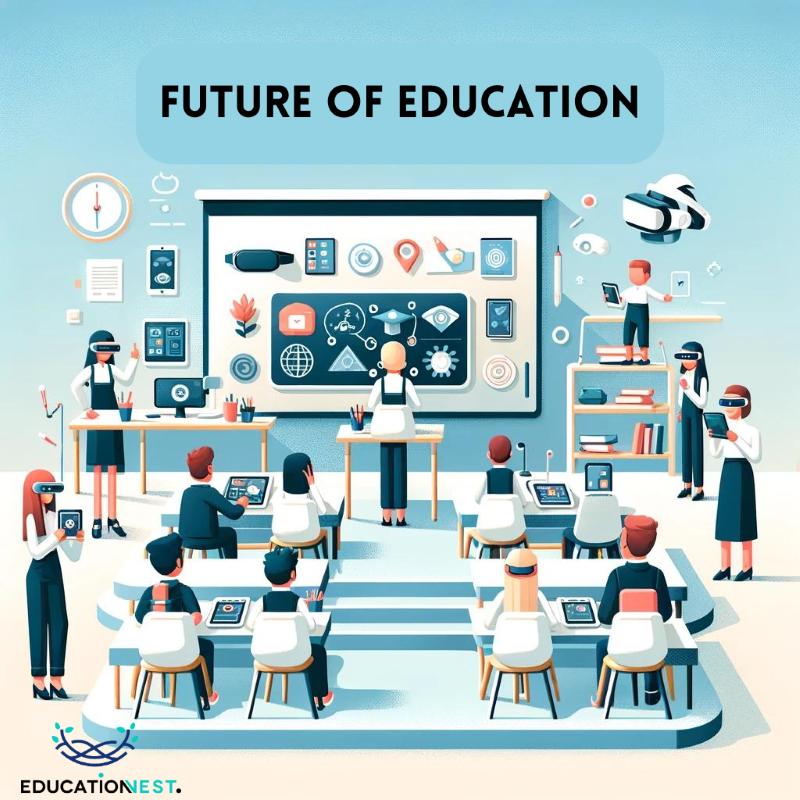Education in the United States is constantly evolving, reflecting the needs of students, the influence of technology, and the challenges of a rapidly changing society. As we move deeper into the 21st century, several trends are reshaping how Americans learn, teach, and prepare for the future. These developments highlight both opportunities and challenges for educators, policymakers, and communities across the nation.
1. The Rise of Technology in Classrooms
One of the most visible changes in U.S. education is the increasing reliance on technology. Digital tools are no longer just supplements; they are central to how students learn. From interactive whiteboards and online textbooks to virtual reality simulations and artificial intelligence tutors, classrooms are embracing technology at all levels.
The COVID-19 pandemic accelerated this shift, making remote learning a necessity. Today, hybrid models—blending in-person and online learning—are common, offering flexibility for students and teachers alike. Technology also helps bridge geographic barriers, providing access to resources for students in rural or underserved areas.
2. Personalized and Competency-Based Learning
A growing trend is moving away from the “one-size-fits-all” approach. Personalized learning allows students to progress at their own pace, focusing on mastery rather than seat time. Competency-based models emphasize skills and knowledge over traditional grades, ensuring students truly understand material before advancing.
This trend is fueled by adaptive learning software and data-driven insights, which help teachers tailor instruction to individual needs. For many students, this means greater engagement and improved outcomes.
3. Mental Health and Social-Emotional Learning (SEL)
In recent years, there has been a strong emphasis on addressing students’ mental health. Rising rates of anxiety, depression, and stress among young people have led schools to expand counseling services and integrate social-emotional learning into curricula.
SEL programs teach skills such as empathy, resilience, and conflict resolution. These not only support mental well-being but also improve academic performance and foster healthier school environments. Schools are recognizing that educating the “whole child” is essential for long-term success.
4. Career Readiness and Skills-Based Education
With an evolving job market, schools are focusing more on preparing students for careers beyond traditional college pathways. There is growing interest in vocational training, apprenticeships, and skills-based learning programs.
High schools and community colleges are expanding partnerships with industries to offer career and technical education (CTE) that connects students with real-world opportunities. Fields such as healthcare, technology, and renewable energy are especially in demand. This shift acknowledges that success does not always require a four-year degree, and alternative pathways can lead to well-paying and fulfilling careers.
5. Diversity, Equity, and Inclusion (DEI)
Diversity and equity remain central themes in U.S. education. Efforts are being made to close achievement gaps among students from different racial, socioeconomic, and geographic backgrounds. Schools are also working to create more inclusive environments for students with disabilities, English language learners, and those from marginalized communities.
Curriculum reforms are increasingly incorporating diverse voices and perspectives, aiming to reflect the multicultural reality of the nation. Equity in education is not only a matter of fairness but also a key factor in ensuring long-term economic and social stability.
6. Parental and Community Engagement
Another significant trend is the growing involvement of parents and communities in education. From debates over curriculum content to concerns about safety and resources, families are playing a more active role in shaping schools.
This trend can be both positive and challenging. While increased engagement strengthens accountability and community ties, it can also lead to heated conflicts over issues such as book bans, standardized testing, or teaching approaches. Nonetheless, the active participation of parents highlights the importance of education in public life.
7. Lifelong Learning and Adult Education
Education is no longer confined to children and young adults. The rise of online platforms and accessible training programs has expanded opportunities for lifelong learning. Adults are pursuing new skills to adapt to changing industries, while retirees engage in learning for personal growth.
Universities, community colleges, and private platforms are meeting this demand by offering flexible, affordable programs designed for non-traditional learners. This trend underscores the idea that education is a continuous journey rather than a one-time phase.
8. Challenges Ahead
While these trends show promise, challenges remain. Funding disparities between wealthy and under-resourced school districts continue to limit opportunities for many students. Teacher shortages, particularly in STEM fields and special education, put additional pressure on schools. Political debates over curriculum and policy often overshadow pressing issues such as equity and student well-being.
Addressing these challenges requires cooperation between educators, policymakers, families, and communities. The future of U.S. education depends on striking a balance between innovation and inclusivity.
Conclusion
Education in the United States is at a pivotal moment. Trends such as technological integration, personalized learning, mental health support, and career readiness are transforming the way students learn and teachers teach. At the same time, ongoing challenges highlight the need for collaboration and a commitment to equity.
As the world changes, so must education. By embracing innovation while staying true to core values of access and fairness, the U.S. can prepare students not just for jobs, but for life in a complex, interconnected society.



